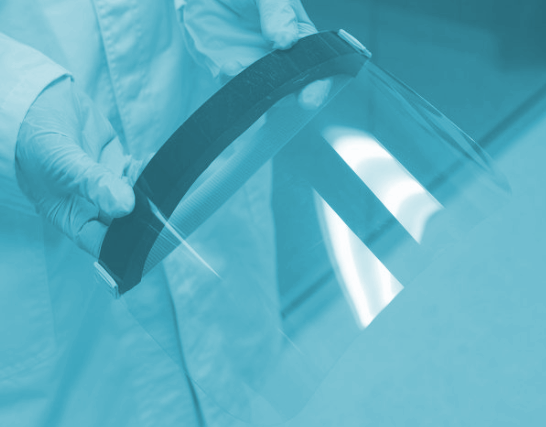New coating for viral shield
 Australian engineers have come up with a new spray coating to shield surfaces from viruses and bacteria.
Australian engineers have come up with a new spray coating to shield surfaces from viruses and bacteria.
A first-of-its-kind sprayable coating that can prevent the surface spread of infection from bacteria and viruses - including COVID-19 - over a sustained period has been developed at the University of Sydney.
The spray works two ways: repelling viruses and bacteria through an air-filled barrier, and killing pathogens through microscopic materials if the layer becomes damaged or submerged for extended periods.
The spray uses a combination of plastics strong enough to be considered an alternative to bullet-proof glass.
The coating provides a reliable alternative to standard disinfectants, which are becoming less effective and require regular reapplication, and is the only permanent surface layer proven to protect surfaces from contamination by viruses.
It is safer than existing alternatives to disinfectant, with no harmful side effects and more stable potency – unlike the next most promising non-disinfectant agent that kills bacteria, silver nanoparticles.
The experts say that the coating could be applied to surfaces in public settings such as lift buttons, stair rails, surfaces in hospitals, nursing homes, schools and restaurants, to prevent the spread of common viruses and bacteria.
The team tested the mechanical stability and surface energy of the coating. They also tested its ability to resist contamination from bacteria and viruses by subjecting it to high concentrations of both.
The samples were submerged for extended periods of time and the sprayed surfaces were deliberately damaged to test the spray’s resilience against their contamination.
“We have identified the mechanical processes underpinning how the spray works and quantified its effectiveness in different environments,” says co-lead researcher Professor David Nisbet.
“For this study, we tested metal surfaces. However, in the past we have shown the spray can be applied to any surface, for example, blotting paper, plastic, bricks, tiles, glass and metal.
“Our coating successfully prevented up to 99.85 per cent and 99.94 per cent of the bacteria strain growth. We also saw an 11-fold reduction in virus contamination.”
The spray is applied in the same manner as spray paint, although smaller quantities are needed.
“The coating has been engineered through a simple and scalable technique with a careful choice of materials to provide ultra-durability. We also believe our explanation of the mechanism behind the antimicrobial and antiviral effects could significantly advance research in antipathogen technologies that could see affordable manufacture of an effective surface spray to protect people from viruses and bacteria,” Professor Nisbet said.
The researchers have established a start-up company to progress the technology and make the spray available commercially, potentially within three years.
More details are accessible here.







 Print
Print